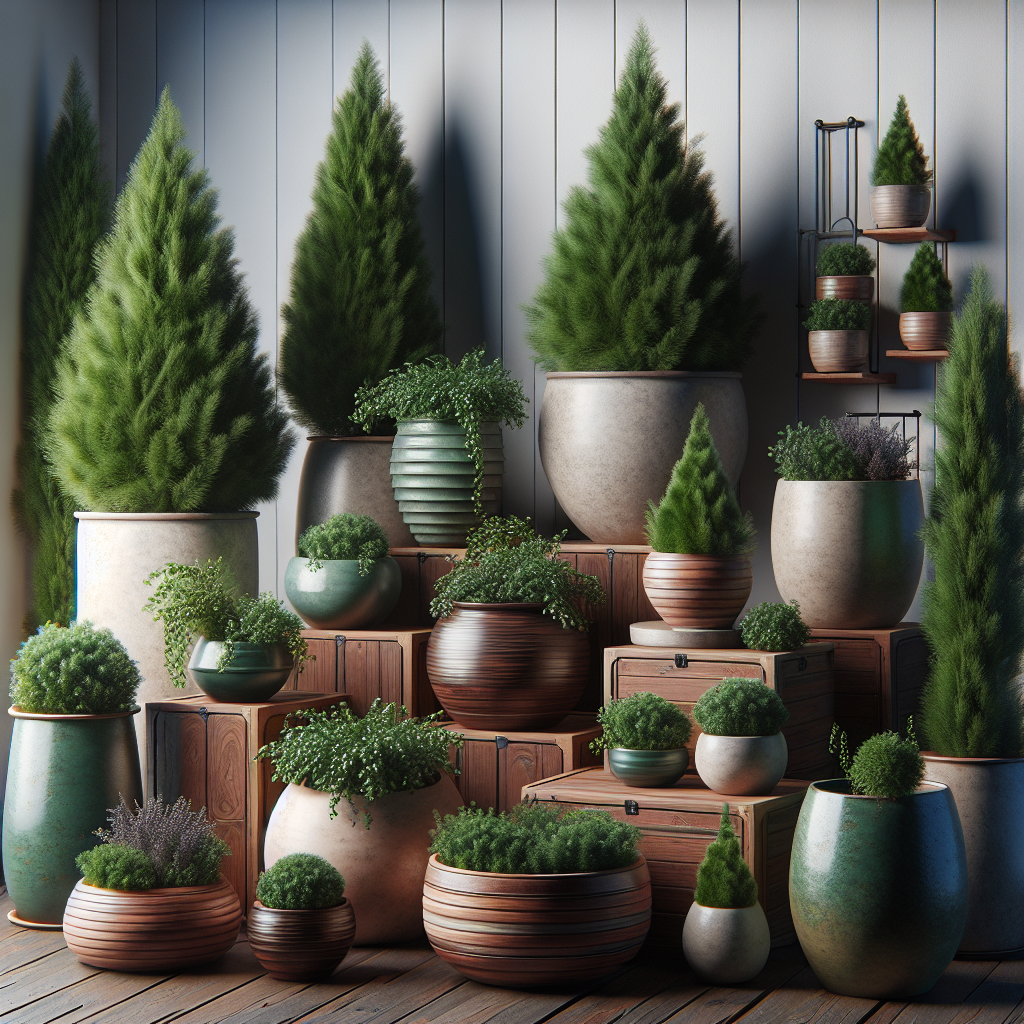Juniper plants are a popular choice for landscaping due to their versatility, hardiness, and low maintenance requirements. They are commonly used in gardens, parks, and public spaces for their attractive foliage, easy care, and ability to thrive in a variety of growing conditions. While many people think of junipers as being planted directly into the ground, they can also be successfully grown in containers.
Growing juniper plants in containers offers several advantages for home gardeners and landscapers. They can be easily moved around to different locations to provide the best growing conditions, such as sunlight exposure or protection from harsh weather. Containers also allow for better control of soil quality and moisture levels, which can be especially important for junipers that are sensitive to overwatering.
There are many different varieties of juniper plants that can be grown in containers, ranging from small shrubs to tall trees. Some popular choices include the Blue Star Juniper (Juniperus squamata ‘Blue Star’), which has striking blue foliage and a compact growth habit that makes it ideal for small spaces. The Hollywood Juniper (Juniperus chinensis ‘Torulosa’) is another favorite, known for its twisted branches and unique form.
When selecting a container for growing junipers, it is important to choose one that provides adequate drainage holes to prevent waterlogging. Terra cotta pots are a good choice because they allow excess moisture to evaporate through the porous material. Plastic containers are also suitable but may require more frequent monitoring of soil moisture levels.
The type of soil used when planting junipers in containers is crucial to their success. A well-draining potting mix specifically formulated for succulent plants is recommended, as it will help prevent root rot and other moisture-related issues. Mixing in some perlite or coarse sand can further improve drainage and aeration.
Junipers grown in containers require regular watering during the growing season but should be allowed to dry out slightly between waterings to prevent root rot. It is best to water deeply once or twice a week rather than lightly every day. During the winter months when junipers are dormant, watering frequency should be reduced significantly.
Fertilizing container-grown junipers is usually necessary because nutrients can leach out of the soil more quickly than when planted directly in the ground. A slow-release balanced fertilizer applied in spring and again in midsummer will help promote healthy growth and maintain vibrant foliage color.
Pruning junipers that are grown in containers is essential for maintaining their shape and size. Regularly removing any dead or diseased branches will help improve air circulation around the plant and reduce the risk of pests or diseases. Pinching back new growth can also encourage bushier growth habits.
In addition to their ornamental value, junipers have practical uses when grown in containers as well. Placing them on patios or decks can help create privacy screens or windbreaks while adding greenery to outdoor living spaces. Some dwarf varieties like the Juniperus horizontalis ‘Wiltonii’ are even suitable for use as bonsai trees due to their compact size and intricate branching patterns.
Overall, the versatility of juniper plants in containers makes them an excellent choice for both beginner gardeners and experienced landscapers alike. With proper care and maintenance, these adaptable evergreens can thrive in almost any setting while adding beauty and interest to any outdoor space.
In conclusion, if you’re looking for a versatile plant that offers year-round interest without requiring much attention, consider adding some container-grown junipers to your garden or landscape design plans. Their attractive foliage colors, unique forms, easy care requirements make them an excellent choice for both ornamental purposes practical uses alike.














